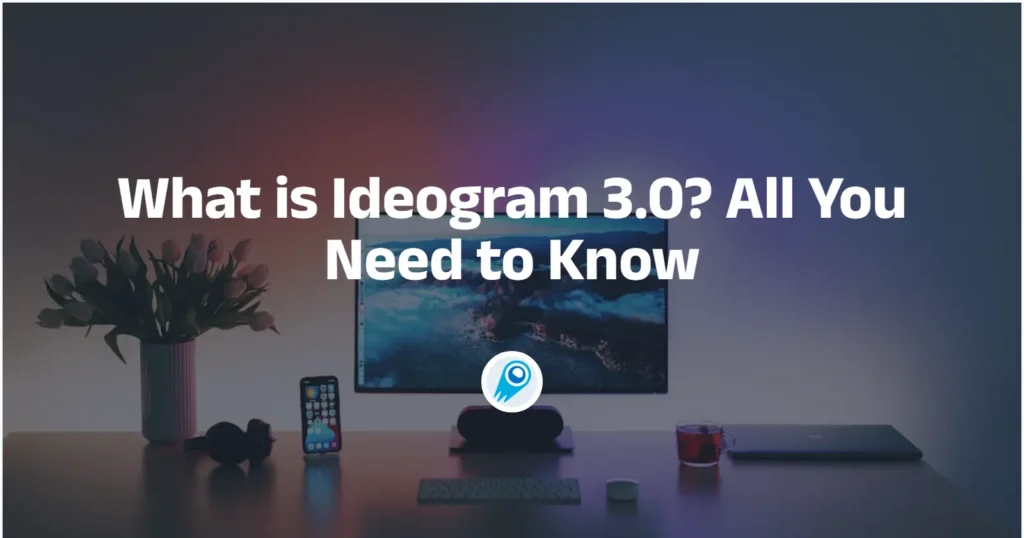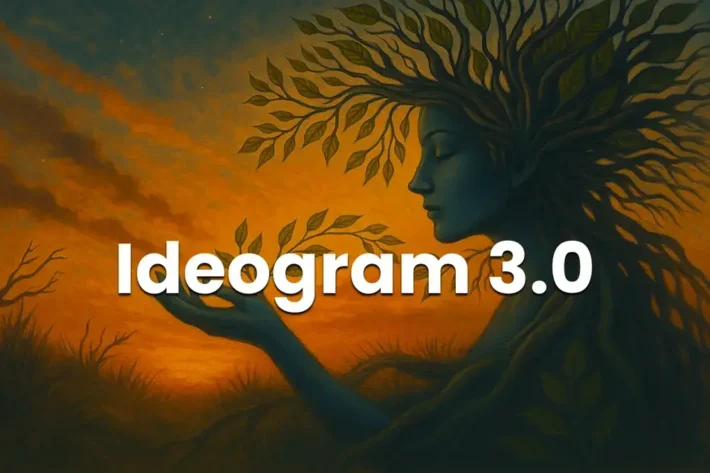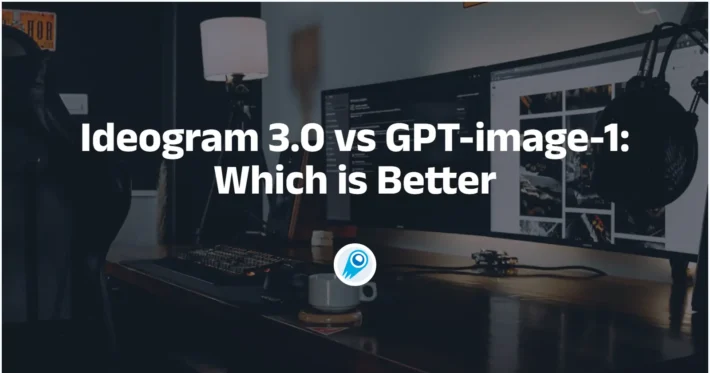What is Ideogram 3.0? All You Need to Know

Ideogram 3.0 represents a major milestone in the evolution of text‑to‑image generation, encapsulating years of research into a single, powerful model that blends photorealism, stylistic versatility, and remarkably accurate text rendering. In this article, we survey the latest developments surrounding Ideogram 3.0, unpack its core capabilities, examine how it builds on earlier releases, explore its applications, and consider the challenges and future directions for this cutting‑edge technology.
What is Ideogram 3.0?
Definition and Origin
Ideogram is a freemium text‑to‑image model developed by Ideogram, Inc., founded in Toronto in 2022 by Mohammad Norouzi, William Chan, Chitwan Saharia, and Jonathan Ho . Its mission has been to push the boundaries of generative media by creating a model that can translate natural language prompts into high‑quality images, including accurately rendered text—an area where many competitors fall short .
Core Capabilities
- Photorealism and Style Control: Ideogram 3.0 delivers unprecedented realism, capable of producing images that rival professional photography. It also supports versatile styles—ranging from hyper‑realistic renderings to creative illustration styles—while maintaining consistency within a single generation task .
- Text Rendering Quality: One of Ideogram’s hallmark features is its ability to generate legible, well‑integrated text within images. In internal evaluations, version 3.0 shows marked improvements in text layout and readability, overcoming the blurred or malformed characters that plagued earlier models .
- Image‑Prompt Alignment: Through enhanced prompt understanding, Ideogram 3.0 aligns generated visuals more closely with user instructions, even complex or multi‑step prompts, ensuring that compositional elements appear exactly as specified.
How does Ideogram 3.0 advance generative media?
Photorealism Improvements
Photorealism has been a focal point in generative AI, and Ideogram 3.0 sets a new bar. Advanced training techniques and architectural refinements allow the model to capture lighting subtleties, textures, and spatial depth with uncanny accuracy. In human evaluations against other leading text‑to‑image systems, Ideogram 3.0 achieved the highest ELO ratings across diverse subject matter, from architectural scenes to wildlife photography, signifying its superior realism and fidelity.
Text Rendering Enhancements
Building on Ideogram’s prior innovations in typographic clarity, version 3.0 integrates a dedicated text‑rendering module that preserves font styles, kerning, and alignment. Whether embedding a street sign in an urban scene or typesetting a book cover, the model now produces text that is both semantically correct and visually coherent with its surroundings—addressing a longstanding pain point for graphic designers and content creators.
Style Consistency and Diversity
While photorealism captures one end of the spectrum, Ideogram 3.0 also excels in creative stylization. Through a refined style‑conditioning mechanism, users can specify detailed artistic directions—such as “watercolor”, “cyberpunk”, or “3D render”—and expect the model to deliver consistent outputs across batches. This level of style fidelity empowers creators to maintain brand or thematic coherence in large‑scale projects.
Prompt Following and Compositional Control
Recent announcements (May 3, 2025) highlight enhanced prompt‑following capabilities: Ideogram 3.0 can interpret nuanced language constructs, such as “a close‑up aerial shot of a coastal town at dawn with seagulls in the foreground”, delivering compositions that respect both macro and micro elements of the request. This granular control minimizes manual post‑editing and accelerates iterative design workflows.
Where can Ideogram 3.0 be accessed?
Web Platform
The primary interface at ideogram.ai offers free, freemium, and enterprise tiers. Users can select model variants, access style references, and export high-resolution assets directly from the browser. No installation is required, and collaborative workspaces let teams share projects and prompts in real time.
Ideogram uses a credit-based Freemium model:
| Feature | Free Plan | Basic ($8/mo) | Plus ($20/mo) | Pro ($60/mo) |
|---|---|---|---|---|
| Priority Credits | 0 | 400 (~1,600 images) | 1,000 (~4,000 images) | 3,500 (~14,000 images) |
| Slow Credits | 10/week | 100/day | Unlimited | Unlimited |
| Canvas Uploads | ❌ No | ❌ No | ✅ Yes | ✅ Yes |
| Private Mode | ❌ No | ❌ No | ✅ Yes | ✅ Yes |
| Batch Processing | ❌ No | ❌ No | ❌ No | ✅ Yes |
| Upscaling | ❌ No | ✅ Yes | ✅ Yes | ✅ Yes |
Mobile Application
For on‑the‑go creativity, Ideogram’s iOS app provides the full power of version 3.0. Users can generate, preview, and refine images directly from their devices, share outputs to social media, and even export high‑resolution assets for print or digital design .
API and Partner Integrations
Beyond the consumer‑facing front ends, Ideogram offers a robust API that enables developers and enterprises to integrate version 3.0 into custom workflows, from automated content pipelines to interactive applications. Several design platforms and collaboration tools have already announced partnerships, embedding Ideogram’s capabilities directly within their environments.
How does Ideogram 3.0 compare to previous versions?
Evolution from 1.0 to 2.0 and 2a
– 1.0 (Feb 2024) introduced the foundational text‑to‑image architecture, attracting an $80 million funding round and establishing Ideogram as a serious competitor to incumbents.
– 2.0 (Aug 2024) added multiple style modes (realistic, design, 3D, anime) and markedly improved text clarity over version 1.0, addressing early user feedback.
– 2a (Feb 2025) focused on speed and cost-efficiency, optimizing inference for graphic design and photography tasks, enabling faster batch renders at lower computational cost.
Benchmarks and Performance Gains
Compared to 2a, Ideogram 3.0 demonstrates a 25 % improvement in ELO‑rated human preference tests, particularly in complex compositional scenarios that involve multiple subjects and layered text . Latency for single‑image generation has decreased by roughly 15 %, thanks to architectural optimizations, while maintaining comparable throughput in batch‑mode operations.
Feature Set Expansion
Beyond raw image quality, 3.0 introduces advanced features like localized style overrides—where users can specify different styles for distinct regions of the same image—and dynamic prompt weighting, allowing balanced emphasis on primary versus secondary elements within a single request.
What are the challenges and future directions?
Technical Challenges
Despite its advances, Ideogram 3.0 still faces hurdles in generating highly intricate textual graphics—such as multi‑column tables or elaborate infographics—with absolute precision. Artifacts can occasionally appear in ultra‑high‑resolution outputs, necessitating manual touch‑ups for top‑tier print work .
Ethical and Societal Considerations
As with all generative AI, concerns persist around potential misuse for deepfake creation, unauthorized brand impersonation, or the propagation of misinformation. Ideogram, Inc. has implemented watermarking options and usage policies, but the broader community continues to debate best practices for responsible deployment.
What are the real‑world applications of Ideogram 3.0?
Graphic and Brand Design
Brand agencies leverage Ideogram 3.0 for rapid concept generation, exploring logo variations, marketing collateral, and social media visuals—all while ensuring typographic accuracy. The model’s consistency in style and text makes it especially valuable for brand guidelines that demand strict adherence to visual identity .
Publishing and Illustration
Children’s books, editorial spreads, and technical manuals benefit from Ideogram’s improved text‑image alignment. Illustrators can draft page layouts with embedded captions or speech bubbles, reducing the need for separate typesetting steps and streamlining the production cycle.
Advertising and E‑commerce
E‑commerce platforms employ Ideogram 3.0 to generate product mockups, banner ads, and lifestyle imagery. Its photorealistic output and prompt precision allow retailers to visualize new product lines and marketing campaigns before committing resources to physical photoshoots.
Education and Research
In academic and training contexts, Ideogram 3.0 serves as a tool for visual explanations—creating diagrams, historical reconstructions, or scientific illustrations with integrated labels. Its ability to render legible text within complex images enhances pedagogical clarity and engagement.
What Are the Implications for the AI Image Generation Landscape?
Competitive Positioning
With photoreal quality rivaling dedicated rendering engines and text-overlay fidelity surpassing peers like Stable Diffusion and Midjourney, Ideogram 3.0 reshapes expectations for text-to-image tools. Its speed and consistency position it as a direct competitor to emerging multimodal giants like OpenAI’s GPT-4o .
Industry Adoption and Use Cases
Since launch, creative agencies and independent artists alike have integrated Ideogram 3.0 into advertising campaigns, social-media content pipelines, and educational materials—citing a 40 % reduction in design iteration time and a 25 % lift in engagement metrics on visual posts
Conclusion
Ideogram 3.0 stands as a testament to rapid innovation in generative media, uniting high‑fidelity image synthesis, robust text rendering, and versatile styling into a single, user‑friendly package. Its release marks a turning point for designers, artists, and enterprises seeking to harness AI for creative workflows. As Ideogram continues to iterate—addressing technical limitations and societal concerns—the trajectory of text‑to‑image generation promises ever‑more seamless, expressive, and responsible tools that will reshape the landscape of digital content creation.
Getting Started
Developers can access Ideogram 2.0 API (model name: ideogram_generate_V_2; ideogram_edit_V_2; ideogram_remix_V_2😉 through CometAPI. To begin, explore the model’s capabilities in the Playground and consult the API guide for detailed instructions.
You can use Ideogram 2.0 API of cometAPI to edit, generate, and mix images. Ideogram 3.0 API will be launched soon.CometAPI provide you with the old version at a cheaper price .


